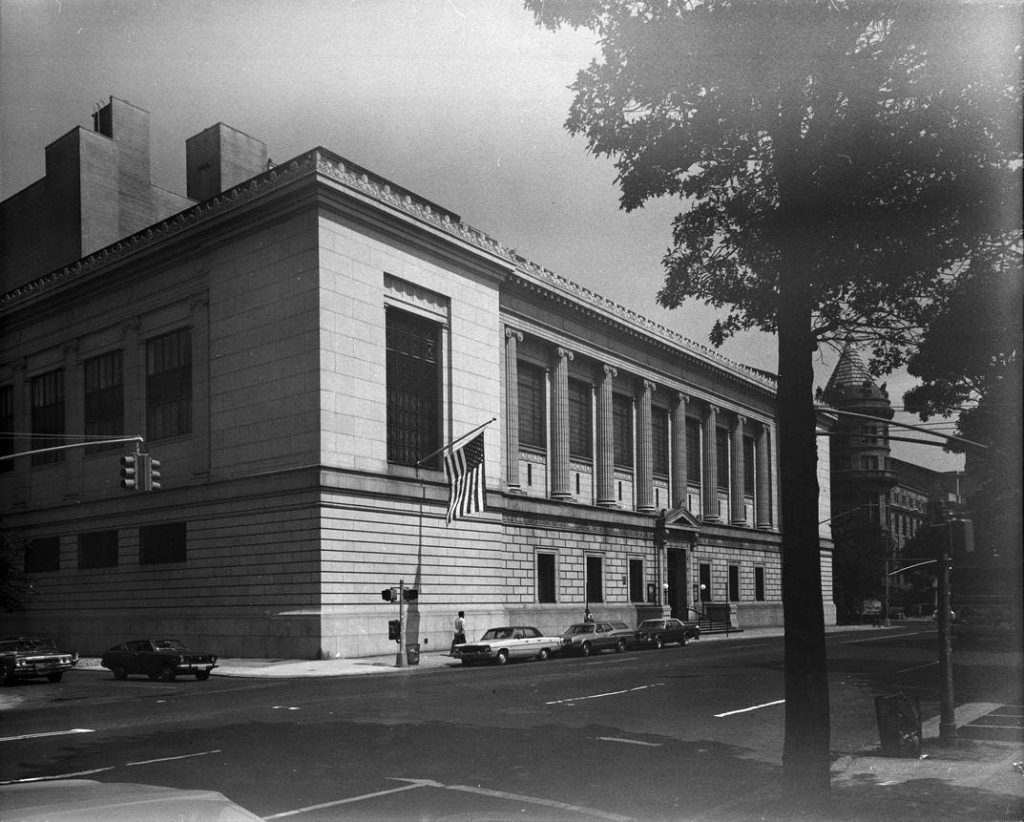The everyday clothing worn by American women in the last 200 years is on display through this weekend at the New York Historical museum in Manhattan.
Described by the museum as an “unprecedented look at women’s everyday clothes,” this features everything from author Sylvia Plath’s Girl Scout uniform to psychedelic microminis, modern suits and fast-food workers’ uniforms.
View of the New York Historical Society at 170 Central Park West, New York, New York, circa 1975. (Photo by Edmund Vincent Gillon/Museum of the City of New York/Getty Images)
Getty Images
The exhibition, the museum said, “shows how American women from every background have lived, worked, and dressed for 200 years.”
The museum also called the exhibition “groundbreaking in its focus on the everyday clothing of ordinary American women—a subject neglected in most fashion histories.”
The garments and accessories on display are from the Smith College Historic Clothing Collection.
According to the museum, “this unique survey honors countless lives, tracing through the lens of dress how women’s roles have changed over the decades. Each piece holds colorful stories about the woman who wore it, the one who made or bought it, and her context in place and time. Whether homemade or ready-made, many of the garments are modest and inexpensive. Some are one-of-a-kind pieces; others are examples of clever making-do, which seems particularly relevant today; and most reflect the popular styles of their era. Among the many extraordinary examples are a rare World War I uniform worn by an American woman working behind enemy lines and a 1970s go-go dancer’s costume. Exceptional photography and rich archival visuals accompany the highly readable texts, which offer a wealth of historical and social analysis of a side of fashion and feminism rarely considered.”
“Clothing has always played a crucial role in women’s lives, reflecting their evolving roles, identities, and social conditions,” said Louise Mirrer, president and CEO of New York Historical. “This exhibition celebrates the impressive history and untold narratives embedded in our clothing. We hope visitors come away with a deeper understanding of the intersection of fashion, culture, and women’s enduring spirit.”
“Each thread and length of fabric on view in this exhibition provides insightful clues about the women who wore these garments,” said Anna Danziger Halperin, associate director of the Center for Women’s History at New York Historical. “By shining a light on the diverse roles women have played and the clothes they wore, we hope to underscore the social and cultural shifts that continue to shape our past. We are delighted to present these garments as tangible connections to the rich and complex history of women.”
“If we acknowledge garments of the past that have been overlooked, we honor the lives of the women who wore them,” said Kiki Smith, director of the Smith College Historic Clothing Collection. “In the words of the Spanish writer Antonio Muñoz Molina, ‘We see things if we know they exist.’ This exhibition celebrates the significance of these everyday garments and reveals why they are important to save.”
For those who cannot see the exhibition in person, Kiki Smith recently wrote a lavishly illustrated book, published by Rizzoli, on the historic clothing collection.
Rizzoli said, “Groundbreaking in its focus on the everyday clothing of ordinary American women—a subject neglected in most fashion histories—Real Clothes, Real Lives highlights over 300 garments and accessories from the Smith College Historic Clothing Collection. This unique survey honors countless lives, tracing through the lens of dress how women’s roles have changed over the decades. Each piece holds colorful stories about the woman who wore it, the one who made or bought it, and her context in place and time. Whether homemade or ready-made, many of the garments are modest and inexpensive. Some are one-of-a-kind pieces; others are examples of clever making-do, which seems particularly relevant today; and most reflect the popular styles of their era. Among the many extraordinary examples are a rare World War I uniform worn by an American woman working behind enemy lines and a 1970s go-go dancer’s costume. Exceptional photography and rich archival visuals accompany the highly readable texts, which offer a wealth of historical and social analysis of a side of fashion and feminism rarely considered.”
.
.

